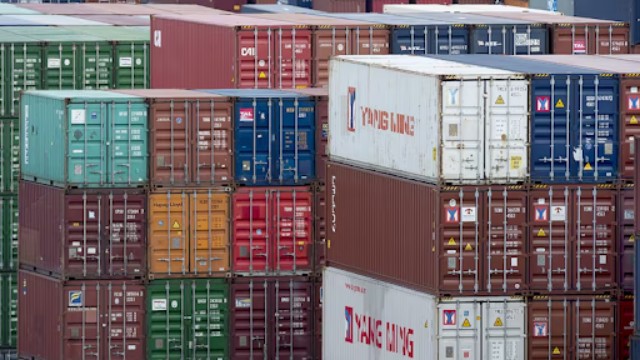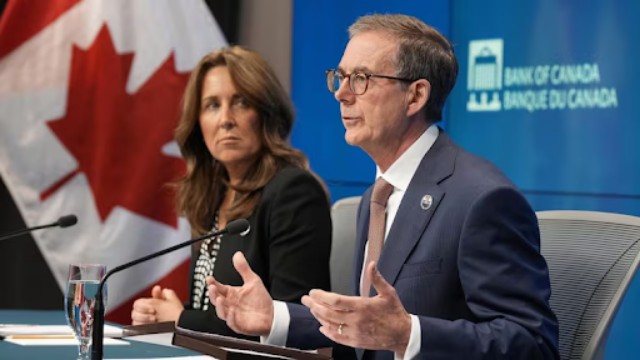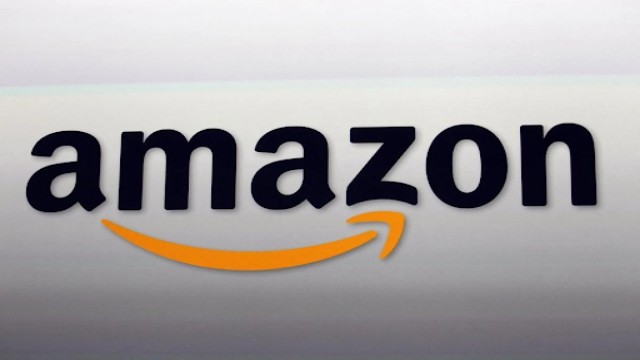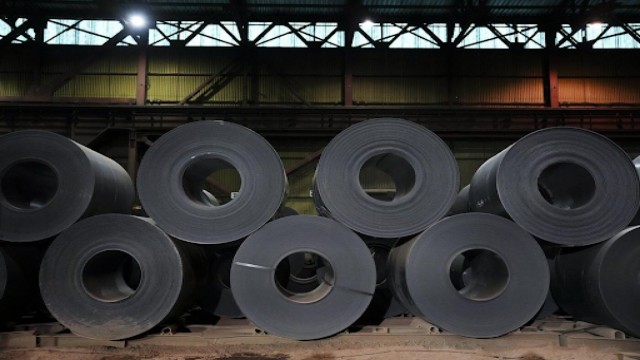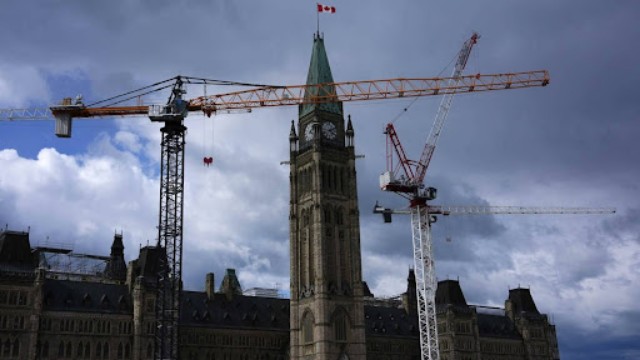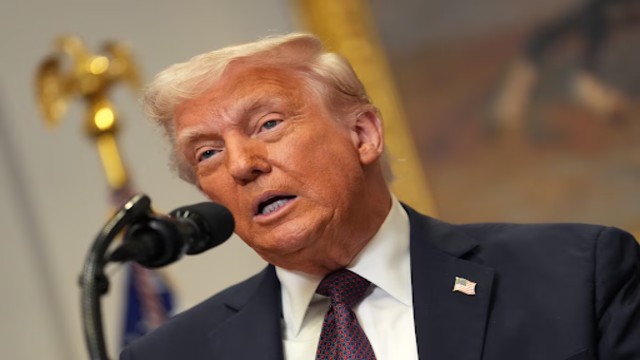
U.S. President Donald Trump delivers remarks in the Roosevelt Room of the White House on March 24, 2025, in Washington, DC. Getty Images
U.S. President Donald Trump has announced plans to impose tariffs on vehicles and pharmaceuticals, further expanding his aggressive trade policies. While he did not specify if these tariffs would take effect on April 2, the date his administration is set to introduce “reciprocal” tariffs on trading partners, the move signals heightened economic tensions.
Tariffs and Trade Uncertainty
For weeks, Trump has hinted at imposing sector-specific tariffs, particularly on automobiles, but their exact timeline remained unclear. Reports from Bloomberg and The Wall Street Journal suggest that these tariffs may not take effect on April 2, but they are still being considered. This uncertainty contributed to a stock market rebound on Monday, as investors speculated on potential economic impacts.
The reciprocal tariffs, which are expected to be a central part of Trump’s protectionist trade agenda, appear to have replaced his earlier promise of a universal tariff. However, key details—such as how these tariffs will be calculated and which countries they will target—remain vague.
Targeting Trade Surpluses
During a cabinet meeting with Elon Musk, Trump reiterated his long-standing claim that the U.S. is being exploited by both allies and adversaries in trade. He specifically pointed out that countries with trade surpluses—including Canada—benefit unfairly from their economic relationship with the U.S.
In 2023, Canada had a $63-billion trade surplus with the U.S., mainly due to oil exports. While Canada's tariff rate on U.S. imports is relatively low (around 2%), the Trump administration suggests that other factors—such as Canada’s digital services tax and its supply management system for dairy and poultry—could lead to a higher reciprocal tariff rate.
New Tariffs on Venezuela Trade
Trump also revealed plans to expand his trade war, announcing a 25% tariff on imports from any country that purchases oil or gas from Venezuela. This move, set to take effect on April 2, is part of the administration’s effort to punish Venezuela for allegedly sending criminals to the U.S.
Countries that import Venezuelan crude, including China, India, and Spain, will be affected by these new tariffs. Trump made it clear that this 25% duty will be in addition to existing tariffs on foreign goods.
Canada-U.S. Trade Tensions Escalate
Since returning to office, Trump’s trade policies have been aggressive and unpredictable.
- On March 4, he imposed a 25% tariff on Canadian and Mexican imports, with a lower 10% levy on energy products, minerals, and potash.
- Two days later, he temporarily exempted some goods that comply with the United States-Mexico-Canada Agreement (USMCA), giving businesses a month to adjust their supply chains.
Trump has frequently criticized Canada’s auto industry, at one point threatening to shut it down after Ontario Premier Doug Ford proposed an electricity export surcharge. In 2023, Ontario’s auto plants—operated by Ford, GM, Stellantis, Honda, and Toyota—produced 1.5 million vehicles, with 93% exported to the U.S.
On March 12, Trump further escalated tensions by imposing 25% tariffs on steel and aluminum imports, including from Canada. In response, Canada retaliated with tariffs on $60 billion worth of U.S. goods and warned of additional countermeasures if the U.S. does not reconsider its stance.
As tensions mount, global markets and trade relations remain on edge, awaiting the next move from the Trump administration.


